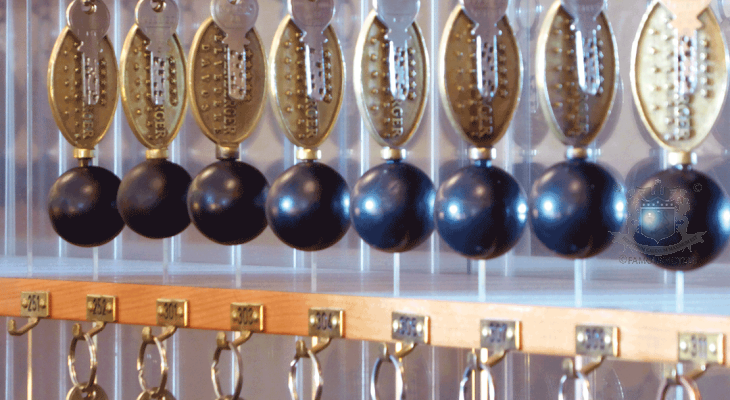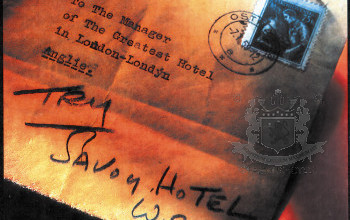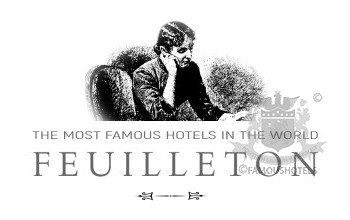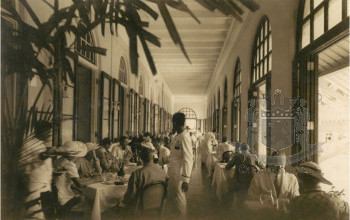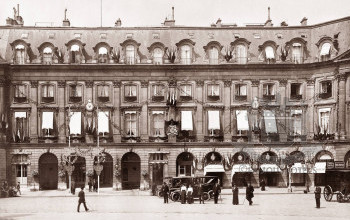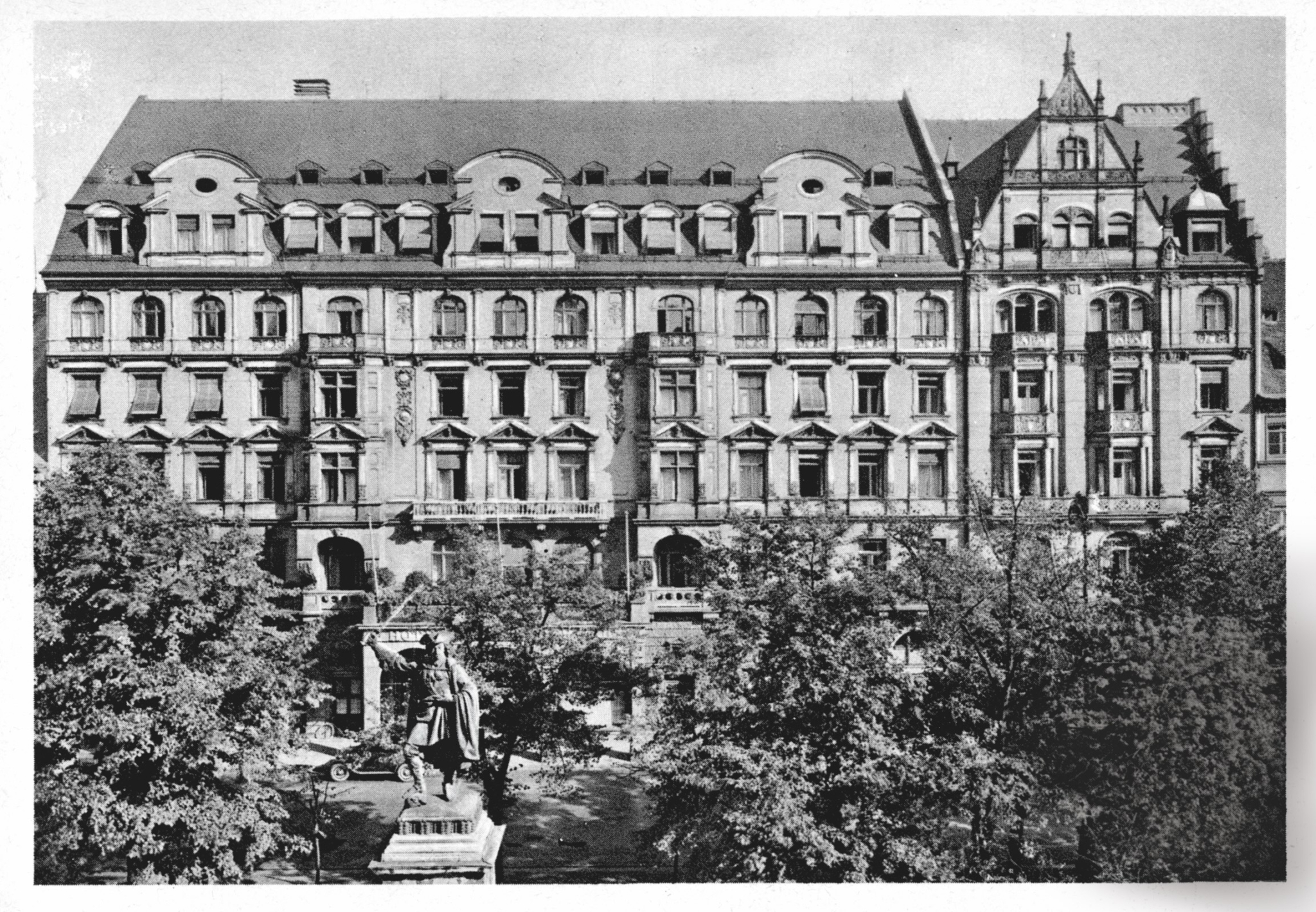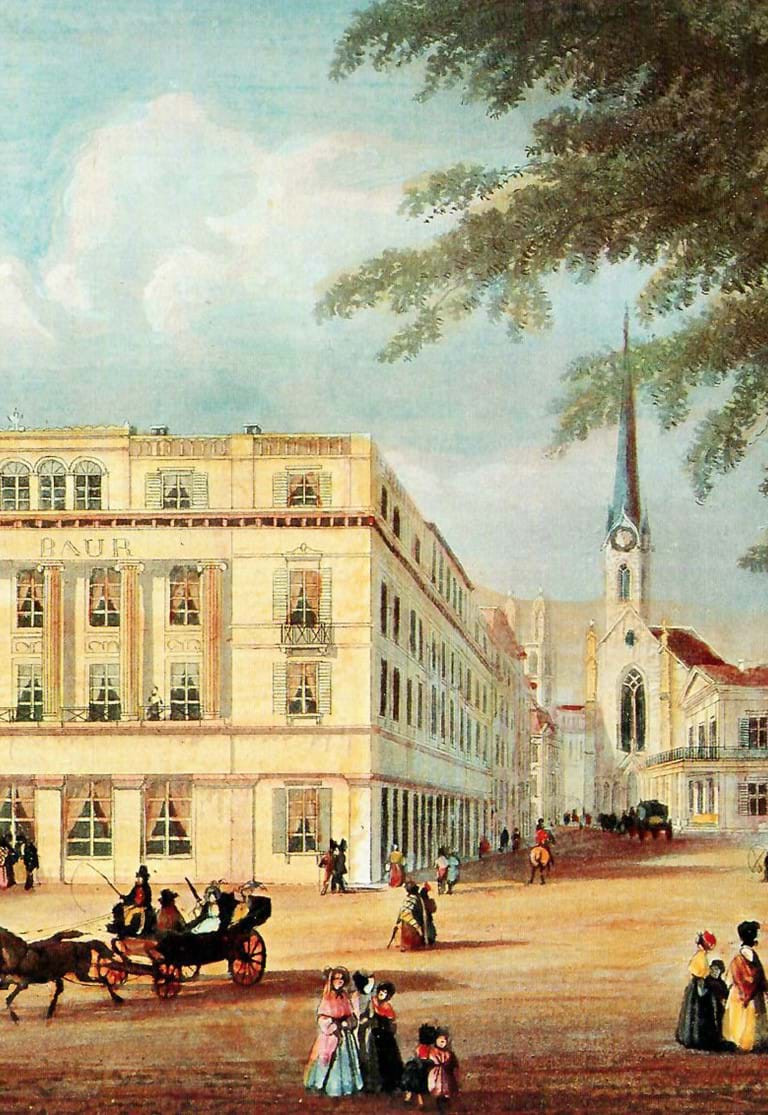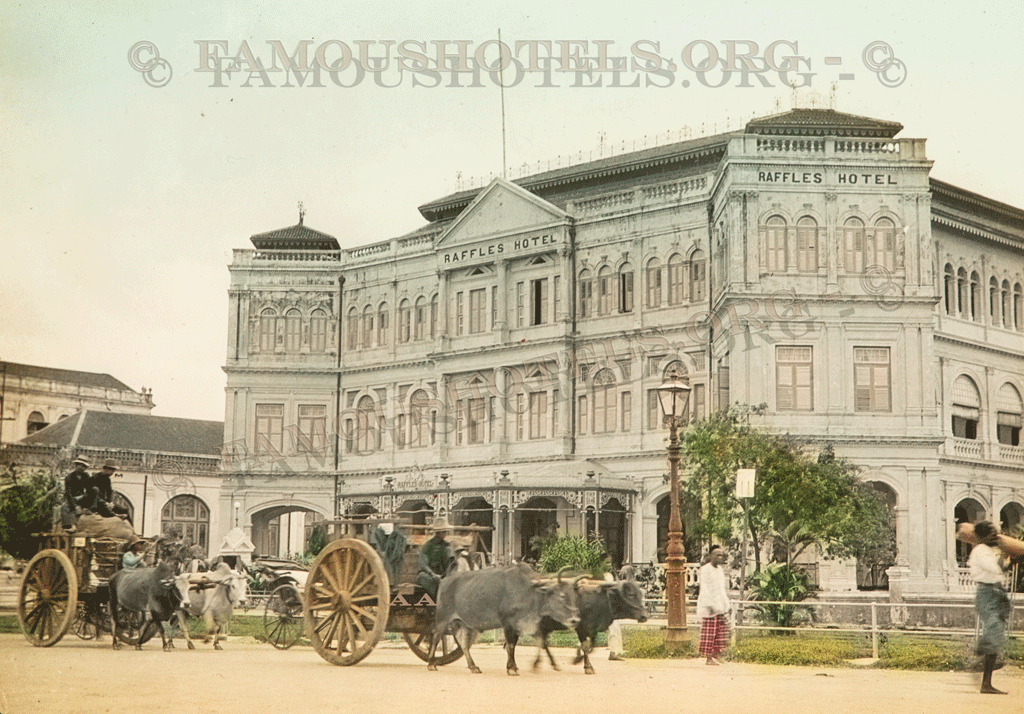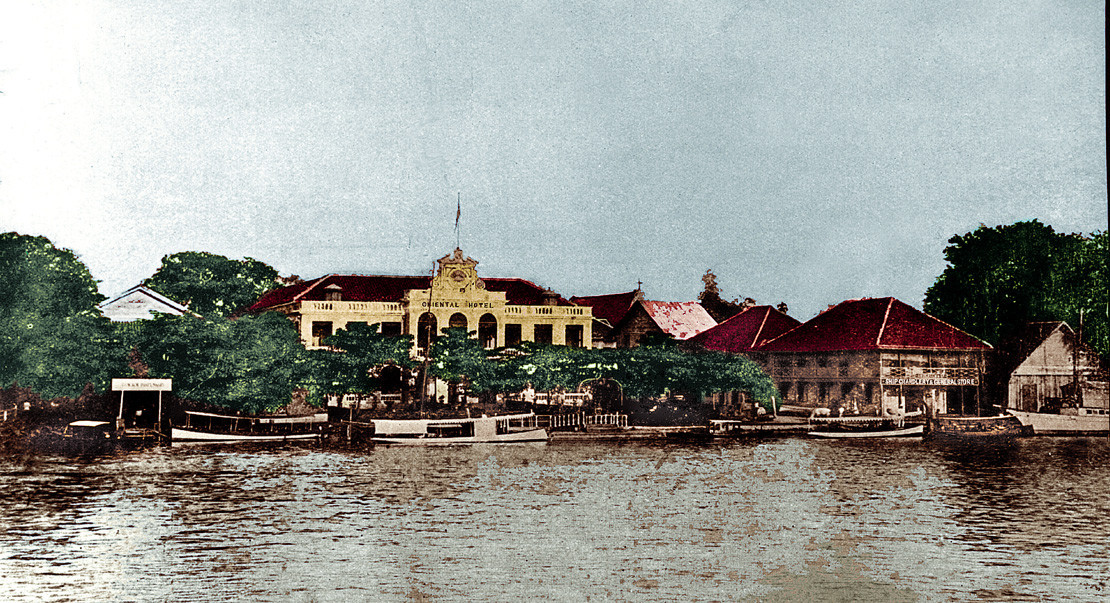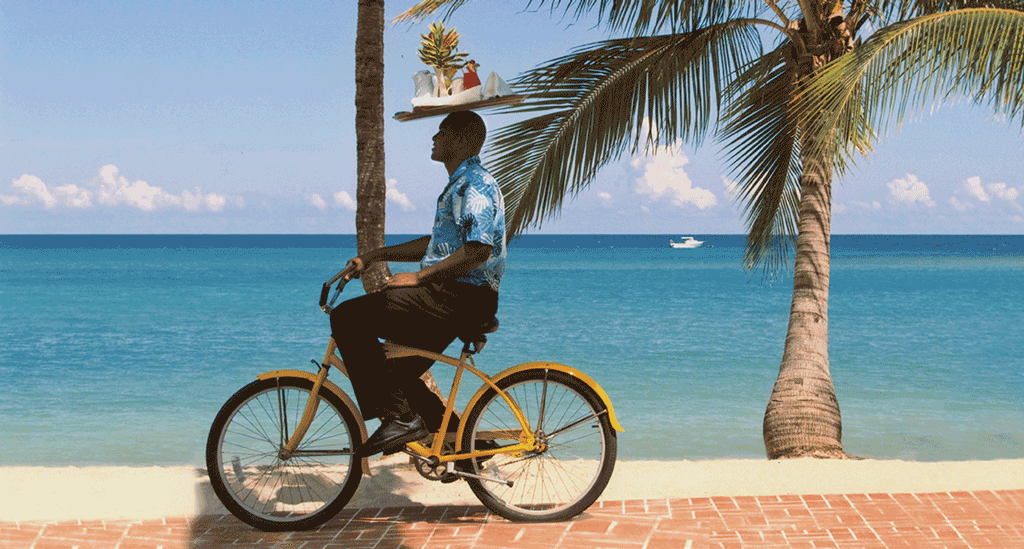Historic Hotel Names
( words)
All entries are in alpahbetical order.
BAUR EN VILLE / BAUR AU LAC
takes its name from its founder, Johannes Baur, who had first built the Hotel Baurin downtown Zurich in 1838. When he opened his second hotel by the lakeside in 1853, he renamed the original property en Ville (“in town”) and the new one au Lac (“at the lake”) — to avoid confusion. Unlike names such as Bellevue, Grand Hotel, or Bristol, which spread across the world, the name Baur remains unique. A Hotel Baur did once exist in Venice, but it had no relation to Johannes Baur or his Swiss establishments.
BELLEVUE
One of the most common historic hotel names, referring in general to a loction with an extraordinarty good view (also italian "Bella Vista", spanish "Buena Vista", german "Zur Schönen Aussicht").
BRISTOL
Bristol hotels all over the world like to claim that they were allowed to name their house after Frederick Augustus Hervey, the fourth Earl of Bristol. It has been said that the Earl only gave permission for the use of his title to those hotels that could measure up to his high standards. This is of course nonsense since the majority of these hotels opened their doors over 100 years after the Earl had died. Furthermore, these hotels also carry the coat of arms of the city of Bristol, a city, not a travelling aristocrat.We can assume that the early Bristol hotels (Rome 1870, Paris 1878 = not the Bristol we have today, this one was in Place Vendôme and the Hotel Bristol in Vienna, founded 1892) served as role-models to the hotels that opened in later years (Warsaw 1901, Oslo 1920, Paris 1925 plus around 50 further hotels across Europe).
They all proudly carry the coat of arms of the City of Bristol. The often quoted connection to the Earl of Bristol is no more than a poorly researched PR-gag.As you can see, the hotel trade is full of surprises and inventions. Until recently this story had been supported by many Bristol Hotels and sold to guests as fact.
Who first brought up the legend about the traveling duke - we don't know. The person in question is the late Frederick Augustus Hervey(1730-1803), Earl of Bristol and Bishop of Derry. The Earl and bishop was an eccentric traveller. Nevertheless, for the hotels to have named their houses with his consent, he should have lived one hundred years later.
The solution of the riddle is in the coat of arms.
We have long studied the legends around the Earl of Bristol. Finally we compared the coats of arms of the Earl and the City of Bristol. All hotels use the coat of arms of the city of Bristol, none the one of the Earl. For example, the coat of arms of the Hotel Bristol in Vienna went through various stages. The first one 100% resembled the coat of arms of the City of Bristol.In 1923 it was updated to a more modern version in Art Nouveau style. For the first time lions were used instead of unicorns. The lions later changed back to unicorns. The current coat of arms is once again graced by lions, however, the centre piece is the coat of arms of the city Bristol in England.
GRAND HOTEL
The term first appeared in London in the 16th century, but was taken over and developed on the European continent in the 1870s, when the first hotels – offering all possible and thinkable services and all of them under one roof – opened.
These hotel where usually owned by shareholders (this explains the absence of a personal name like e.g. "Sacher", "Brown's",).
(e.g. Grand Hotel Vienna, 1870)
: A Grand Hotel offers at least 100 of rooms, all of them of a considerable equal size and shape.
and it offers (and offered) - under one roof:
: accommodation (with bath rooms, en suite or on the same corridor).
: food and beverages (a restaurant, room service)
: stables (later garages)
: staff quarters (servants rooms - mostly on the upper floors, for the equipage of the wealthy traveller)
: services such as luggage transport (porter, upon request, extra to pay for)
: amenities such as heating (log fire in rooms, upon request, extra to pay for)
: light (candles, upon request, extra to pay for)
: all services related to organising things in the city (concierge - theatre tickets, train tickets and ship passages, ...)
The evolution of the Grand Hotel:
One day all services mentioned above, were included in the basic lodging price (no more extra bills for candles, log fire and service of porters, etc., today known as hidden hotel charges). In 1889, The Savoy Hotel in London was the first to provide all these services on an "all inclusive" base. The terms half-board and full-board (Halbpension, Vollpension) came into being - providing breakfast plus one or two meals per day included into the room rate.
The First Grand Hotel
The oldest Grand Hotel we have found so far opened in January 1774 in London. David Low opened the 'Grand Hotel'. The hotel was intended for residence by a wealthy clientele, with a top price of 15s. a night for a suite of two rooms.
The Grand Hotel (du Louvre) in Paris opened in 1855, the Grand Hotel Vienna in 1870.
Growing into a Grand Hotel:
The Grand Hotel Kronenhof in Pontresina (CH) was actually founded in 1851, but only changed its name to ‘Grand’ Hotel in 1890. The same applies to the Grand Hotel in Stresa, Italy, founded during the 1860s. The Grand Hotel Pupp in Carlovivary, Czech Republic, prides itself in a history dating back to 1701, but as a matter of fact, it had adopted the name ‘Grand’ Hotel only in 1913. The Grand at Trieste opened in 1873, the Grand Hotels Oslo and Stockholm in 1874, the Grand Hotel Vesuvio in Naples in 1882.
IMPERIAL
Imperial Hotels can not only be found in Imperial surroundings. You find them in democratic countries like America, too. Obviously the name is used to explain that the guest can expect "imperial grandeur". See a complete list of all Imperial Hotels here.
KEMPINSKI
Berthold Kempinski was a wine merchant in Raschkow near Posen. In 1872 he moved to Berlin and became a popular restaurant owner. In 1889 he opened Berlin's largest restaurant. His philosophy was to make luxury available for everybody. On good days his "half portions for half the price" attracted 10,000 customers.
He later adopted a male heir, his son in law, Richard Unger. Kempinski died in 1910, on 5 October 1908 his name was registered as a trademark for "delicatessen" (Feinkostwaren). He never was a hotelier.
The Kempinskis were dispossessed during the Nazi era, arrested and deported. Today's hotel chain has no living connection to the Kempinski family.
Berlin's Hotel Bristol, opened in 1952, was managed by the Hotelbetriebs-Aktiengesellschaft (founded 1897). In 1970 it became the first hotel to bear the name Kempinski.
ORIENTAL
PALACE HOTEL
RAFFLES
Sir Thomas Stamford Bingley Raffles (6 July 1781 – 5 July 1826) was a British subject, best known for founding the city of Singapore (now the city-state of the Republic of Singapore). He is known as the "Father of Singapore". He was also heavily involved in the conquest of the Indonesian island of Java from Dutch and French military forces during the Napoleonic Wars.
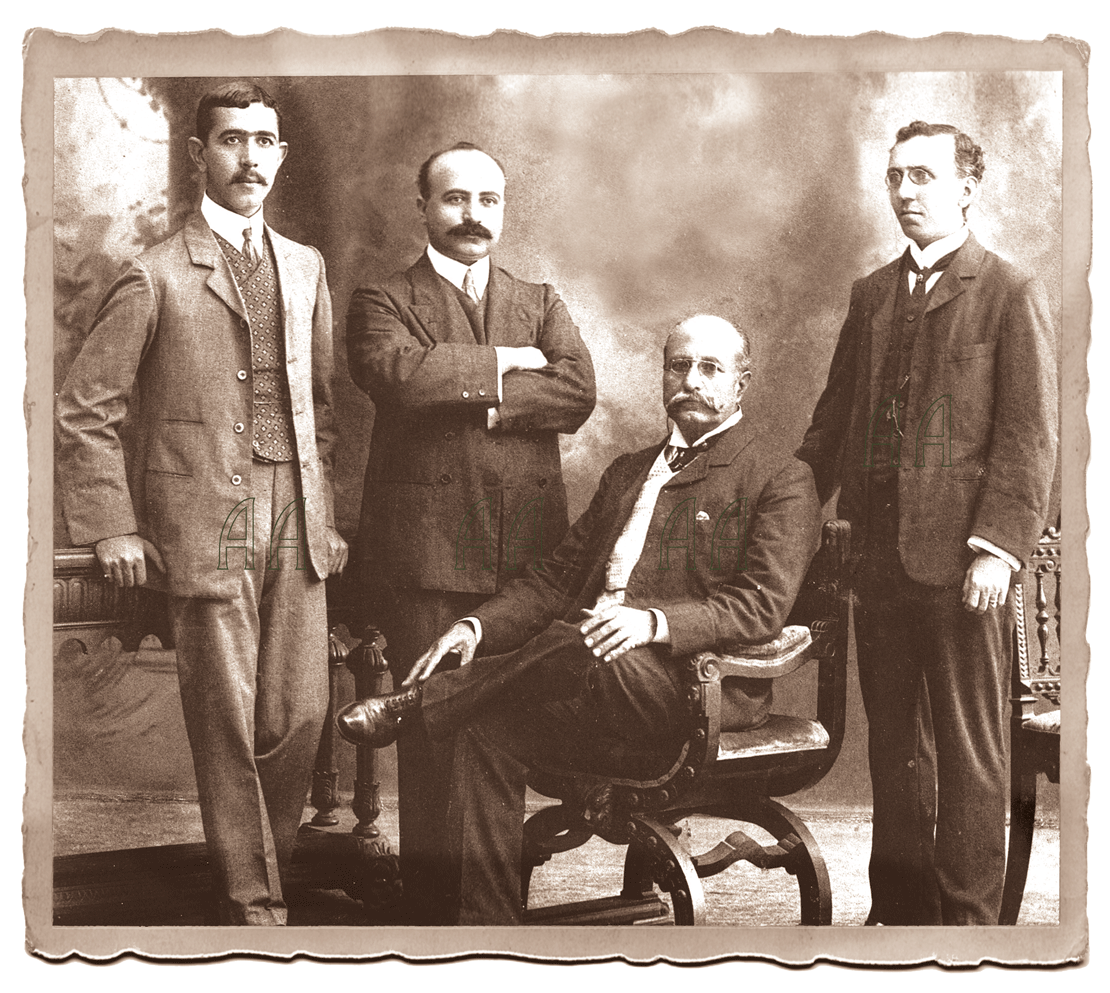 1819, February 6th: Sir Thomas Stamford Bingley Raffles signed the treaty with the new Sultan of Johore to establish a trading post in Singapore for the British East India Company. Raffles installed a committee that drew the basic plans for a controlled development of Singapore.
1819, February 6th: Sir Thomas Stamford Bingley Raffles signed the treaty with the new Sultan of Johore to establish a trading post in Singapore for the British East India Company. Raffles installed a committee that drew the basic plans for a controlled development of Singapore.
The Sarkies brothers: Tigran, Arshak, Martin and Aviet (from left)
In 1886 the Armenian Sarkies brothers took over the manison of Captain George Julius Dare in Singapore´s prestigious "Twenty - House Street" (Beach Road). The property, facing the harbour, belonged to the Arabian trader Syed Mohammed Bin Ahmed Al Sagoff. In 1887, the Sarkies transformed the house, which operated as a Tiffin Room, into a small hostelry and opened with 20 rooms only under the name Raffles Hotel on December 1st.
Only in 1899 the elegant Raffles Hotel main-building we know today with a total of 102 rooms was created. It was the first hotel in the Straits Settlements employing electricity to illuminate and cool a building.
SAVOY
A Global Phenomenon
Few hotel names have travelled the world like Savoy. Its story begins in London, where in 1889 RICHARD D'OYLY CARTE (managed by César Ritz and Auguste Escoffier) created the world’s first truly modern hotel — The Savoy. Yet the name itself goes back centuries earlier, to Prince Peter of Savoy, the 13th-century nobleman who built the Savoy Palace on the same stretch of the Thames. A statue of him still guards the entrance to London’s Savoy Hotel — a reminder that hospitality, like history, has noble roots.
Countless Savoy Hotels appeared around the world. A hotel operating under this name opened in 1888, a year earlier than the London Savoy (1889) and it is where one would probably least expect it: in Kansas City, Missouri. It rose to considerable fame as the haunt of Roosevelt, Rockefeller and consorts. Unfortunately, during the recessional 1930s it suffered considerably and today, all that is left of its former glory is a modest inn (with an extraordinary interior) and the legendary Savoy Grill, which opened together with the West Wing in 1903.
On 1 March 1896, The Savoy in Florence opened its doors, and is still regarded as one of the city’s finest hotels. In Cairo, a Savoy Hotel opened on 28 November 1898, while there was another on Elephantine Island at Aswan. The Savoy in Copenhagen opened in 1906 and The Savoy in Berlin (1929), a small hotel, acquired popularity as an artists’ haunt. Today, one can find the name Savoy on hotels from Brighton (in Victoria, Australia) to Prague, from Frankfurt to Cologne, to Rotterdam, to New York, Blackpool, Caorle and San Francisco. A little hotel in the Italian beach resort of Grado was named The Savoy in 1952 because it was considered a traditional name for famous hotels. There is a Savoy in Buenos Aires, in Rome, Cannes, Vienna, New York and even in Thonon-les-Bains, France, not forgetting the one on the island of Madeira.
Oslo, Lausanne, Caracas, Berne, Moscow and Cannes all have their own Savoy. To distinguish the Baur in the city from the Baur au Lac in Zurich, the prefix Savoy Baur en Ville was added to the famous hotel in the Bahnhofstrasse. The Savoy Baur en Ville is today called Mandarin Oriental Savoy, Zurich.
One can also find a Savoy hotel in the Swedish city of Malmö, in Cusco in Peru, in Yangon in Myanmar and in Melbourne, Australia.
SPEKE HOTEL
(Kampala, Uganda) is named after the famous British explorer, John Hannington Speke, who 'discovered the source of River Nile. Speke Hotel is the first and oldest hotel in Uganda, built in the British Colonial times of the 1920.

